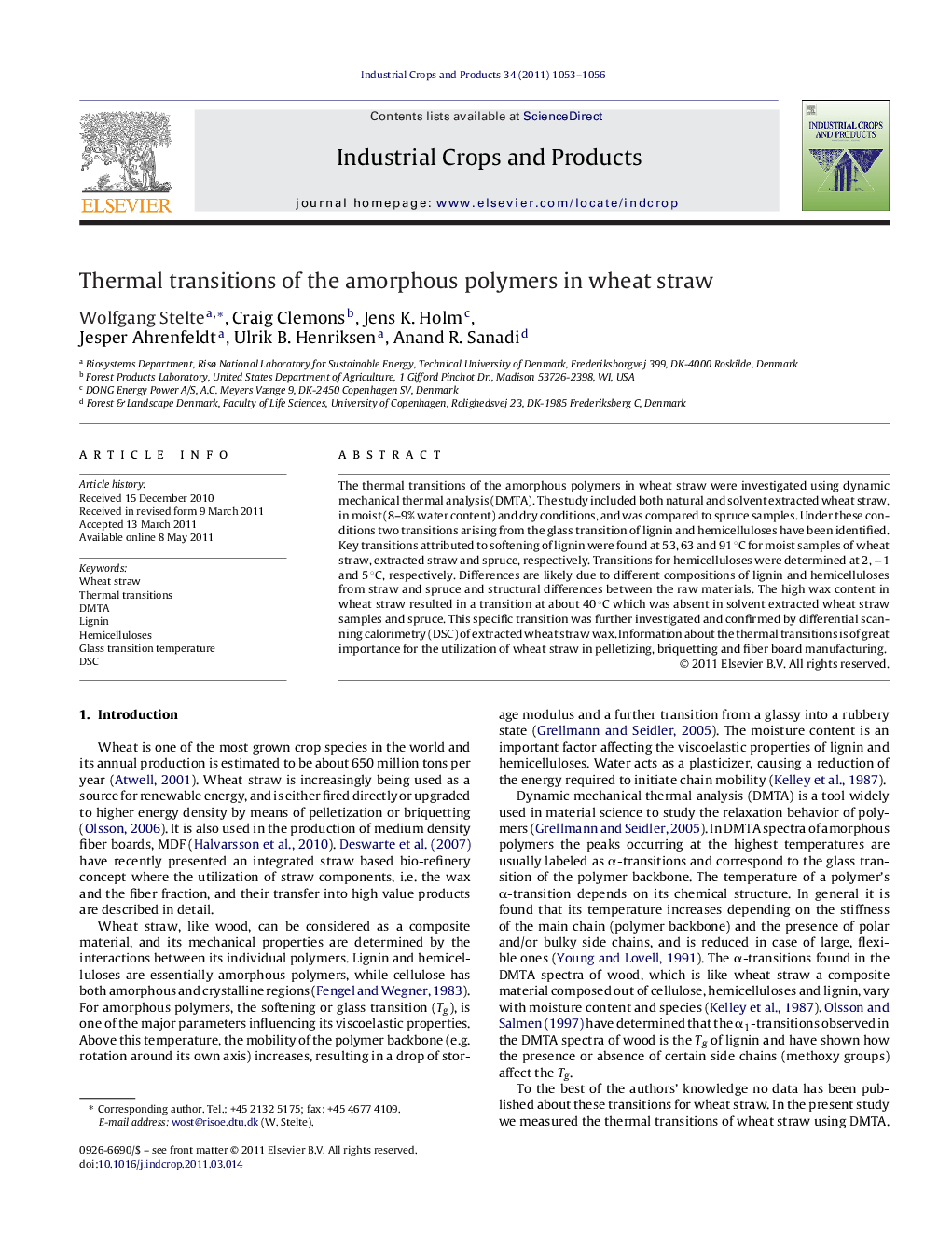| Article ID | Journal | Published Year | Pages | File Type |
|---|---|---|---|---|
| 4514561 | Industrial Crops and Products | 2011 | 4 Pages |
The thermal transitions of the amorphous polymers in wheat straw were investigated using dynamic mechanical thermal analysis (DMTA). The study included both natural and solvent extracted wheat straw, in moist (8–9% water content) and dry conditions, and was compared to spruce samples. Under these conditions two transitions arising from the glass transition of lignin and hemicelluloses have been identified. Key transitions attributed to softening of lignin were found at 53, 63 and 91 °C for moist samples of wheat straw, extracted straw and spruce, respectively. Transitions for hemicelluloses were determined at 2, −1 and 5 °C, respectively. Differences are likely due to different compositions of lignin and hemicelluloses from straw and spruce and structural differences between the raw materials. The high wax content in wheat straw resulted in a transition at about 40 °C which was absent in solvent extracted wheat straw samples and spruce. This specific transition was further investigated and confirmed by differential scanning calorimetry (DSC) of extracted wheat straw wax. Information about the thermal transitions is of great importance for the utilization of wheat straw in pelletizing, briquetting and fiber board manufacturing.
► The thermal transition of wheat straw have been studied under moist and dry conditions. ► Under moist conditions (8.4% MC) two major transitions were found at 2 and 53 °C. ► Transitions were assigned to the glass transition of hemicelluloses and lignin. ► Transitions are similar to the ones observed in wood, but occur at lower temperatures.
